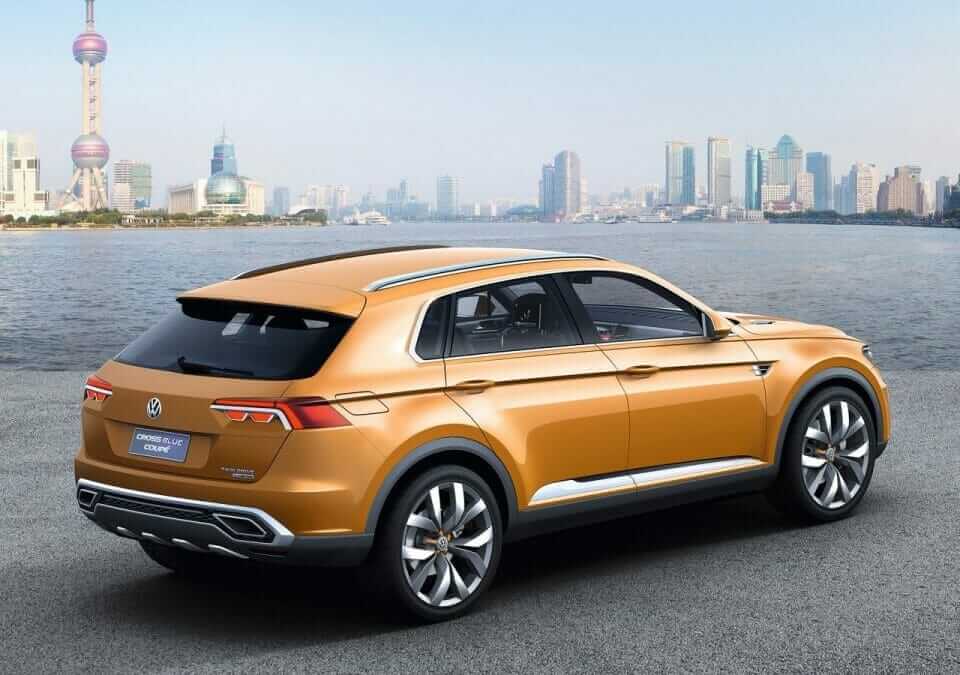
Volkswagen CrossBlue Coupe Concept
At the 2013 Shanghai Auto Show, Volkswagen is giving the public a spectacular glimpse of the future – and of a new SUV design era – in presenting the world premiere of the CrossBlue Coupé. Klaus Bischoff, Head of Design for the Volkswagen Brand: “The disproportionately high growth in the SUV segment gives us designers the opportunity to implement an even stronger diversification of models. In the CrossBlue Coupé we are showing the potential of our Volkswagen design DNA. This concept vehicle will undoubtedly have an influence on future SUV models.” The Head of Design continues: “The CrossBlue Coupé lives by a harmonious triad: rugged in appearance, sporty in proportions and showing a reserved elegance in its sculptural shapes and lines.” Oliver Stefani, lead designer for the project on Klaus Bischoff’s design team: “A highlight is the front-end design of the CrossBlue Coupé. The established theme of horizontal lines as a brand signature is perfected by complete integration of the headlights. Distinctive chrome accents in the lower area emphasise the SUV character of the CrossBlue Coupé and are intuitively perceived as corresponding to the upper grille.”

Dynamic Performance
The Volkswagen CrossBlue Coupé is powered by a plug-in hybrid system that is as fuel efficient as it is sporty. A V6 turbo direct petrol injection engine (TSI) works together with two electric motors here; maximum system power is as much as 305 kW / 415 PS. When the car’s full power potential is utilised, the SUV becomes a sports car: The Volkswagen accelerates to 100 km/h in a mere 5.9 seconds, and its maximum speed is 236 km/h.
Fuel Efficiency
Despite its impressive dynamic performance, the CrossBlue Coupé has a combined fuel consumption of just 3.0 l/100 km (in the new European driving cycle or NEDC). Even in hybrid mode fuel consumption (sub-cycle with discharged battery powered by just the TSI drive), the SUV – which is nearly 4.9 metres in length – consumes just 6.9 l/100 km of fuel. This value enables a theoretical range of around 1,190 kilometres (with a fuel tank capacity of 80 litres) before the car needs to be refuelled.

Zero Emissions in the City
The CrossBlue Coupé can be driven in all-electric mode, i.e. without any emissions at all, over a distance of up to 33 kilometres (at a maximum speed of 120 km/h). To intentionally use this especially eco-friendly mode in urban areas, the driver can push a button to select the all-electric drive mode. As a production vehicle, the concept vehicle – which is based on the new modular transverse matrix (MQB) – could also be fitted with conventional drive systems (four and six-cylinder engines) configured for a wide variety of fuels (petrol, diesel, CNG).
Maximum fuel economy
With its combination of pioneering fuel economy and the highest standards of driving dynamics, the CrossBlue Coupé – which can be driven to a top speed of 236 km/h – is an SUV that is as efficient as it is sporty. As already noted, one of the most innovative plug-in hybrid systems ever (V6 TSI + two E-motors + dual-clutch gearbox + “propshaft by wire”) has let Volkswagen achieve a predicted fuel consumption of 3.0 l/100 km for the all-wheel drive SUV according to the European standard for electric hybrid vehicles ECE-R101.

EV mode
Powered by its lithium-ion battery, the Volkswagen CrossBlue Coupé can cover a distance of up to 33 km in pure electric mode; in this mode, its top speed is limited to 120 km/h. In EV mode, only the 85 kW E-motor at the rear axle provides propulsion. In all-electric driving, the V6 TSI is decoupled from the drivetrain by opening the clutch, and the engine is shut off. As soon as there is a need for TSI power – because of the battery charge state or other parameters – it is coupled to the drivetrain again, jolt-free, within fractions of a second.
Battery regeneration mode
Whenever the driver releases the accelerator pedal or applies the brakes, and the battery is insufficiently charged, the two electric motors act as generators and feed energy recovered from the brakes into the lithium-ion battery. In this case, the TSI is also shut off and decoupled from the drivetrain.

Battery in the Centre Tunnel
In all-electric driving, the E-motors are supplied with energy from one of the eight modules that make up the lithium-ion battery. The battery has an energy capacity of 9.9 kWh and is housed in the centre tunnel. The power electronics unit – which is integrated in the front engine compartment and operates at a voltage level of around 375 Volt – manages the flow of high-voltage energy to and from the battery and the electric motors. Meanwhile, a DC/DC converter supplies the body electrical system with the 12 Volt electrical power it requires. The electric drive system does not impose any limitations on interior space whatsoever. The battery can be charged either by external power sources (230 Volt connections) or while driving.
Propshaft by wire
All four wheels are also driven whenever the driver intentionally activates Offroad mode (once again by pressing a button on the centre console). In this case, and when the battery’s charge is low, the front electric motor – which is now supplied with energy by the V6 TSI – operates exclusively as a generator and supplies electrical power to its counterpart at the rear axle. Since the energy for driving the rear wheels flows by wire and not mechanically, this is referred to as “propshaft by wire”. The all-wheel drive system is still operational, even when the battery is in a low charge state, because the TSI drives the rear E-motor via the front E-motor in Offroad mode.













































